Here’s the second part of the Designers’ Notes
for The Dogs of War, available soon at your nearest barracks.
The first part, covering general design choices and NATO armies, can be found here on Big Board Gaming. For those interested in a broader overview of the system, I strongly suggest downloading the Less Than 60 Miles Extended Designer’s Notes from our site. I really think they are worth a look if you have never read them.
And remember to reserve a copy by writing to info@TRLGames.com! God Save the Queen!
Designer’s Notes
By Fabrizio Vianello, Part 2
The Soviet Army

The Red Army spent decades planning and refining its customized version of Blitzkrieg. A brief and incomplete list of its key points is:
-
Successive attack waves organized into Echelons, using each echelon up to its breaking point before replacing it entirely with the next
-
Strong anti-aircraft cover, down to regiment level
-
Ruthless use of reconnaissance, engineer and artillery units
-
Immediate assault on detected enemy positions, with little or no preparation
Despite its limitations, this doctrine had the merit of correctly identifying the strategic problems Warsaw Pact faced in a possible conflict against NATO:
- The main Soviet advantage would have been in numbers
- NATO would have probably dominated the skies
- A limited time was available to achieve victory, after which the material superiority of the West and the weaknesses of the Soviet system would have doomed the campaign
The advantages of the Soviet approach are in my opinion well represented in game: Regiments in March Assault can move quickly and, with sufficient support, assault enemy positions without stopping; Artillery in Close Support is able to keep the pace with rapidly advancing mechanized columns and support them when needed; Recce units can open the way for the main force and help pinpointing the weak spots of a defense line.
Every doctrine has its shortcomings, and in the Soviet case this usually means losses: March Assault and Close Support makes formations more vulnerable to artillery and air bombardment, as the units are using roads and column movement whenever possible; Recce units wear out quickly if used continuously in their aggressive role.
In the end, a First Echelon division could find itself completely worn out within 24 – 48 hours, depending by how well it has maneuvered, and how lucky it has been. Of course, the Second Echelon is ready to take its place, but would that have been enough to break the NATO lines? Good question.
The Soviet Northern Front
In a war against NATO, Warsaw Pact forces in central Europe would have probably 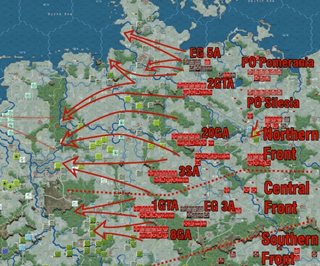 been reorganized as follows:
been reorganized as follows:
-
Western Theater created from Group of Soviet Forces in Germany HQ and in charge for operations from Baltic coast to Northern Italy.
-
Northern Front, created from Northern Group of Forces HQ and in charge for operations from Baltic Coast to Kassel
-
Central Front, created from Central Group of Forces HQ and in charge for operations from Kassel to Wurzburg
-
Southern Front, created from Southern Group of Forces HQ and in charge for operations from Wurzburg to Austria / Italy
-
Due to its size, we further divided Northern Front into two distinct sectors:
Sector 2, covering from Celle to Kassel
Northern Front, Sector 2 is where the main Warsaw Pact effort takes place: Two reinforced Soviet armies are assigned, for a total of eleven category I divisions, five artillery brigades, three assault helicopters regiments, two missile brigades and one airborne division.
Despite this apparently endless availability of troops, Warsaw Pact has its limits too. In order to put together this powerful attack force, other Fronts have been stripped and operations against West Berlin had to be assigned to an ad-hoc army composed by troops normally stationed in Poland.
Sappers – The Shortcut to Socialist Paradise
As already explained in the rules, Soviet sappers were among the units with the most decorations and highest casualty rate in the Red Army. The main reason is in the Soviet doctrine, traditionally encouraging engineering operations in conditions well beyond what a NATO Commander would ever dare to ask.
In game terms, this means that there are no specific units designated as assault sappers, but Warsaw Pact could decide to use almost any combat engineer asset that way: Preparing river crossing or clearing minefields in a hurry, under enemy fire and with little or no cover could become the norm should Warsaw Pact Commander decide to push things to the limit.
Of course, this kind of tactical choice would lead to heavy losses, and an indiscriminate utilization could leave the Soviet armies with little or no engineer support at all.
Developer’s Notes
by Anthony Morphet, The Grumpy One and “Well-Oiled Machine” Cheer Leader
Note: If you’re wondering what the “Well-Oiled Machine” school is, take a look to the first part of the Designers’ Notes here on BigBoardGaming.
Introduction
Fans of Thin Red Line Games, and who isn’t, will know me as a Game Developer from 1985: Deadly Northern Lights. For those who don’t. I am a gamer of some 50 years’ experience but also a retired British Army Colonel who spent most of his junior service in BAOR or similar from the late 70s through the 80s until I attended the German Staff College and served as a General Staff officer in various NATO HQ. The subject of this and similar games was life’s daily round for many of the formative years of my life.
When I came on board for this latest project, or to put it slightly differently when I begged to be allowed to be involved I warned Fabrizio that this was going to be very different from Less Than 60 Miles. He looked at me quizzically so I used one of the spiritual forefathers of this game series as an example: I pointed out that in the Central Front games by SPI, V Corps appeared and then Hof Gap and then BAOR and with the latter the rules were completely rewritten and extended back to the previous 2 games. The designers then gave up on the next two in the series producing them years later and in a completely different format….. “Going to be tough” I said, “no it isn’t” he replied.
Yes it was but it was also great fun and the result is a really good game. I should know I am the Devil’s advocate and the grumpy one! So why was this game a little tougher to get right than its predecessor?
Game versus Simulation
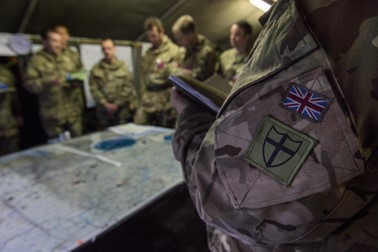 This series of games is predicated on having the C2 process at the heart of its functionality rather than the CRT. This means it is pitting the commanders and staffs against each other rather than the tank crews and infantry section commanders. That is probably the main reason I like this game series so much.
This series of games is predicated on having the C2 process at the heart of its functionality rather than the CRT. This means it is pitting the commanders and staffs against each other rather than the tank crews and infantry section commanders. That is probably the main reason I like this game series so much.
However game is the operative word here and it still has to be playable: The players have to be able to sit down on either side of a gaming table; roll the dice, move the cardboard pieces and have fun in a reasonable timeframe. They don’t have and can’t need a posse of staff officers to support them in doing that.
Getting that balance right was the biggest challenge for me both as a developer and also as someone whose personal preferences tend to take him closer to operational simulations than simple games. The problems were always going to be in the dynamic between the hard factors (CRT) and soft factors (Command Systems), I wish to look at some of those areas in turn.
Complexity
The problem with this game as opposed to Less Than 60 Miles is that the baseline is extremely complex. Whilst on the Warsaw Pact side the map is sensible it covers 1-2 strategic approaches into the depth of West Germany, indeed it is the “best terrain” according to many, although we shall return to that point. However, on NATO’s side this game straddles an Army Group boundary, it encompasses the deployment areas of 4 corps from 3 nations, or at least parts thereof. It requires one of those corps to deploy onto the map and parts of another to drive off the map in short it has massive complexities at its core.
Hard Factors
Although I have stated that the C2 process is at the centre of the rules and not the CRT the hard factors in the game did cause some problems. We had huge discussions about the effectiveness of NATO optronics from the basic optical sights to the most advanced TI and that led to changes to the some of the bad weather and night fighting rules. Perhaps more importantly we had extensive and wide-ranging discussions about just exactly what all those clear hexes actually were on the North German Plain in 1985.
 My position was that this was the era of 2K villages and abundant ATGW: The bulk of German “open countryside” has a village or town every 2000 metres, the range of MILAN ATGW. Given that these are stone or other solid structure houses there is the possibility to dismount infantry and ATGW into them creating a hedgehog of defensive positions which are very difficult to spot from a closed down vehicle
My position was that this was the era of 2K villages and abundant ATGW: The bulk of German “open countryside” has a village or town every 2000 metres, the range of MILAN ATGW. Given that these are stone or other solid structure houses there is the possibility to dismount infantry and ATGW into them creating a hedgehog of defensive positions which are very difficult to spot from a closed down vehicle
We commissioned a forensic investigation into the terrain which was conducted by our co-developer Ulf and the result was major changes to the defensive benefit rules for infantry in those hexes. Those so-called “clear” hexes are no longer a free pass for Soviet armour. They can be, but only if NATO has not got its infantry into defensive posture in them – As NATO how do you make time for that? This one simple rule change will give a very different flavour to this BAOR game as opposed to any, if not all others you may have played over the years.
Soft Factors
I have said this is a game that is primarily about commanders, staffs and in NATO’s case coalition warfare in the later 20th century. There were broadly two main areas that after extensive and intensive discussions were assessed as having to be differently handled than they were in Less Than 60 Miles. These were doctrine and boundaries. Taking each in turn:
Doctrine
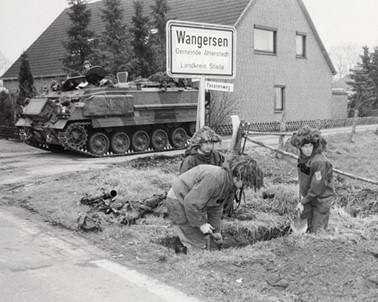 Warsaw Pact doctrine was easy, it was known, it was published, it was generally homogenous and applicable to all members of the Pact, there was nothing to change, Less Than 60 Miles pretty much has it right. Turning to NATO, it is a completely different story.
Warsaw Pact doctrine was easy, it was known, it was published, it was generally homogenous and applicable to all members of the Pact, there was nothing to change, Less Than 60 Miles pretty much has it right. Turning to NATO, it is a completely different story.
Contrary to popular belief, particularly amongst former US and UK officers there was no NATO doctrine. There were NATO standards and NATO agreements, but each member nation interpreted them in terms of its own doctrine. It was to try and give this flavour to the game, to make all the NATO nations just a little bit different from each other that the rules for the Bundeswehr and Auftragastaktik were introduced making them slightly more tactically flexible and a little faster in their responses.
Similarly, the rules for the UK preparation of defensive positions and the use of engineers reflects their doctrine and training of the time. They were the defensive experts bar none and renowned (or damned) for it. Each nation in NATO will now operate somewhat differently than the others. Is that more complicated for the NATO player? Yes, it is.
Boundaries
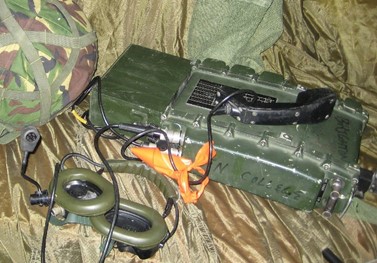 The most difficult thing to get right in a wargame and the most difficult thing for non-military wargamers to understand…the military’s fetish with boundaries. Who precisely owns which piece of land, at any point in time and how that control is passed to someone else is fundamental to the military art. It applies as equally to the individual rifleman or tank commander as well as to the General in the Army Group. Get it wrong and you kill your own side with “blue on blue” or worse you let the enemy through a gap.
The most difficult thing to get right in a wargame and the most difficult thing for non-military wargamers to understand…the military’s fetish with boundaries. Who precisely owns which piece of land, at any point in time and how that control is passed to someone else is fundamental to the military art. It applies as equally to the individual rifleman or tank commander as well as to the General in the Army Group. Get it wrong and you kill your own side with “blue on blue” or worse you let the enemy through a gap.
Today (2020) it is relatively easy with GPS and mass data transmission to pass on a boundary change to all and be ensured that all have received it simultaneously and can act on it immediately. What is very difficult some 40 years after the event is to envisage just how difficult communications were in the 1980s. Despite the earliest computers and the first inklings of the web this scarcely impacted upon tactical and operational military communications. Information was moved electronically as the written and spoken word. Pictures were hand delivered!
Wargamers generally do not recognise any of that, we push our bits of cardboard where they are needed, no matter the boundaries. I have tried for decades to write simple rules to get this right. I have mostly failed. However, I really believed that this game with one AG boundary and 2 corps boundaries absolutely had to have rules that reflected their weaknesses. It is not for nothing that for as long as warfare has existed generals have tried to find the joins or cracks between one formation and another.
In the end the rules give two elegant solutions: The supply rules which were originally to be simply NATO or Warsaw Pact were rewritten on the NATO side so that they are now by individual Corps. This simple change means that even without explicit boundary rules national clumps form as the cardboard troops have to work within range of their supplies. In addition, the rules requiring 2 Pz Gren Div to have troops in the south in contact with the southern map edge. And 11 Pz Gren Div in contact with the northern edge mean that this map is not isolated. Attacking up that boundary may make sense again!
“Well Oiled Machine” vs. “This Is Not a Drill” – The Case for Oil
You will have noted in Fabrizio’s notes his discussion on preparation for this war, or lack thereof, and his views on the likelihood of politicians (and the militaries) following the pre-war plan. We disagree fundamentally. I offer some reasons for my position:
The Past is a Different Country, and We Are All Prisoners Therein
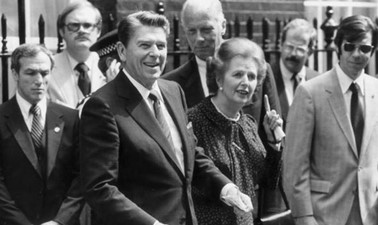 I could postulate that mid 1980s Italy was the NATO odd man out. A shaky left-wing government as the latest in a series of short-lived, shaky governments was totally outside the NATO norm of the time. In the spring and summer of 1985 NATO was absolutely dominated by strong leaders who had all spent political capital to deepen and strengthen NATO and expand its capabilities across the board since the revolutionary “twin track” declaration of 12th December 1979. They had all demonstrated leadership and decision making under considerable domestic pressure.
I could postulate that mid 1980s Italy was the NATO odd man out. A shaky left-wing government as the latest in a series of short-lived, shaky governments was totally outside the NATO norm of the time. In the spring and summer of 1985 NATO was absolutely dominated by strong leaders who had all spent political capital to deepen and strengthen NATO and expand its capabilities across the board since the revolutionary “twin track” declaration of 12th December 1979. They had all demonstrated leadership and decision making under considerable domestic pressure.
Against all odds and substantial foreign opposition, the governments in the UK and US had both successfully fought wars in the previous 3 years. The governments of Belgium, Holland, West Germany and the UK had fought their own populations to install cruise missiles on their territories.
The governments in Denmark and Norway had collapsed due to supporting NATO but had both been reelected with larger majorities. In France the isolationism evident since 1966 was in the process of being ditched and the overt declaration of support to NATO as a reserve force had been made. The first step taken on the road to reintegration. Force modernization at huge cost was taking place in ALL NATO countries albeit at differing paces. The result – most were now technologically equal if not superior to the USSR and certainly to its satellite states.
We Know NATO Can’t Make Decisions – Just Look at Czechoslovakia in 1968 and All That.
The Political Background
It is the height of the TET offensive in Vietnam. The UK has just called in the IMF because it is bankrupt. West Germany has few troops, they are not particularly well trained and have really bad kit. Oh, and there is rioting in the streets. The French are sulking in a corner having pulled out of the command structure 18 months ago, and oh, also rioting in their streets. Perhaps not quite the same political background as 1985…
The Proposed Defence
NATO defence in the autumn of 1968 is essentially immediately nuclear? The premise is trip wire and there is very little wire to trip (see above). Bizarre as it may sound in 2020 let us be in no doubt that this was the plan. Less than 6 years ago a nuclear stand-off over Cuba, a year before that a nuclear stand-off over Berlin. Published doctrine; trip wire, first use and MAD. No deterrence nor escalation. War in 1968 is a one-way trip to Strategic Thermo-Nuclear War..
The Other 1968
Given the above let us place our efficient intelligence collection in perspective. It is 1968 SACEUR and senior western politicians are told exactly what is mobilising in the East (not everything) and what is not (nuclear assets) and what the most likely course of action for those forces is:- the USSR with limited WP support is about to give the Czechs a lesson in socialist solidarity. They note this, realise it doesn’t impact upon them at all and so bow out and let the USSR have the CSSR. After all we don’t want nuclear war by accident. So SACEUR goes on his planned trip to Greece and various Foreign Ministries issue the standard blurb and lo and behold we have:- “Peace in our time”, just like Munich 1938, bye bye Czechoslovakia……Morally repugnant, probably, but certainly not a proof that in a crisis 20 years later NATO would always be in barracks.
What About That Plan? Was the GDP for the Birds?
I note the “This is not a Drill” school’s long list of reasons why the deployment plan would not work as it was written. I totally agree! Some or all of those disasters which Fabrizio postulates would happen. It is exactly what Clausewitz calls friction and as such it is also expected and all armies train to overcome it. Do not forget that this plan was the most thoroughly researched, briefed and (yes) practised plan ever written. Subject to friction? – Definitely yes, laid low by it? – Without a doubt no.
Finally let us not forget that in the 1980s all governments took part in bi-annual NATO exercises and their Heads; Kohl, Thatcher etc did indeed play themselves even if not for long, although simple ministers were frequently there for days. The politicians of that time were well aware of the real consequences of their actions or inactions on “The Plan”. My belief therefore is that in 1985 whilst these governments might have prevaricated when first briefed by their intelligence staffs at D -10, they would not have refused the political decisions required a few days later. A bare minimum of 48 hours useable military preparation time is not unrealistic.
My Experiences in the Round
As a former NATO planner was I too close to the coal face when it came to developing this game? Possibly, there was definitely considerable creative tension between designer and developer at times. However, I think that the energy created by that tension had a synergetic effect and the results speak for themselves. Do we have a simulation – no we don’t but what we have is an excellent game that does a fairly good job of approximating a simulation. How does it do that? By forcing the players to plan their actions and then execute them. You absolutely have to decide which forces need to be where and when.
As NATO you need to have a plan that nominates a core defence and then gives it time to prepare. How do you buy that time? You need to estimate what the enemy can and more importantly cannot do in that time.
As the Warsaw Pact you need to choose your point or points of main effort and concentrate on them whilst binding the rest of NATO in place. Above all it is imperative for both sides to keep reserves for the unexpected. Rest assured, the unexpected will happen. If that is not a simulation of what commanders and staffs have to do, I don’t know what is.
The Dogs of War offers not only a good indication of the level of decision that the commanders at division and corps level would have to have taken in 1985, but also an excellent gaming experience for those who are into the what ifs of the Cold war. Were there other issues along the way? Oh yes but they are not relevant here because they were resolved. This “not quite” simulation is more complicated that Less Than 60 Miles – yet despite all of that it is a great game. So, study the map, plan your moves, push the cardboard, roll the dice and above all have fun.
Hello Fabrizio and Tony, brilliant notes, as always. Tony’s part about the French is spot on (and segues into my own discussion with Fabrizio as to how the newly created F.A.R. would have been used, my view being that almost all of it, including the 9e DIMA, would have been committed in Western Europe, as the 1987 Moineau Hardi exercise demonstrated). I am really looking forward to it ….and giving a hand with the Dutch (and the French when we get to them). Onward and upward!